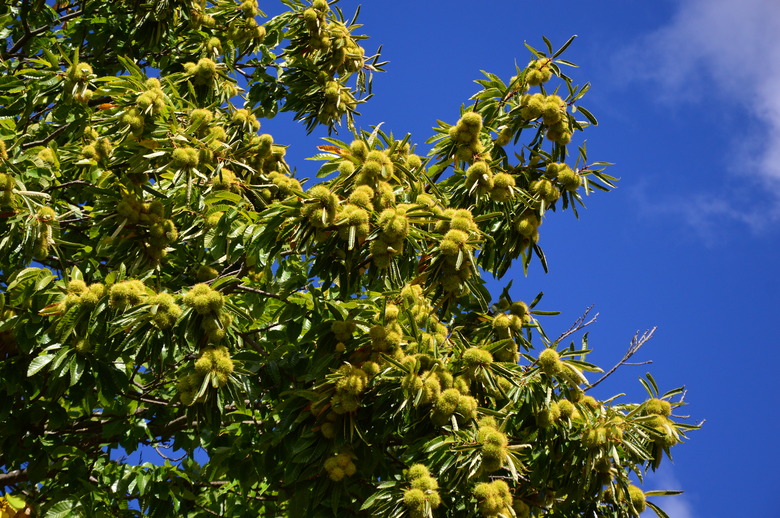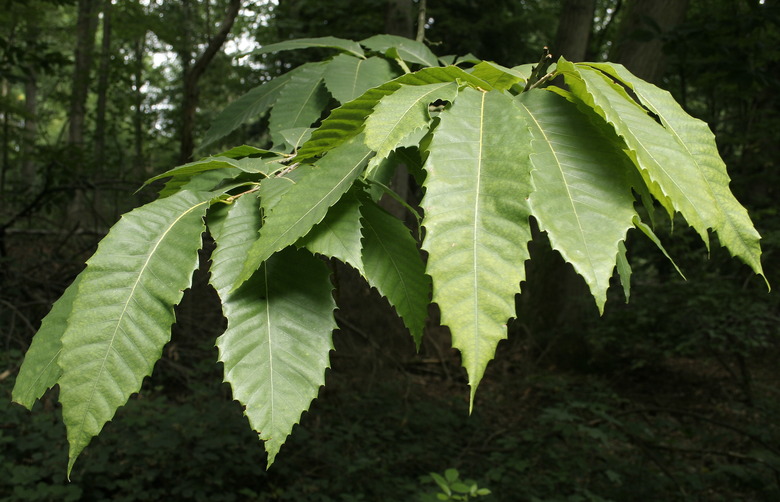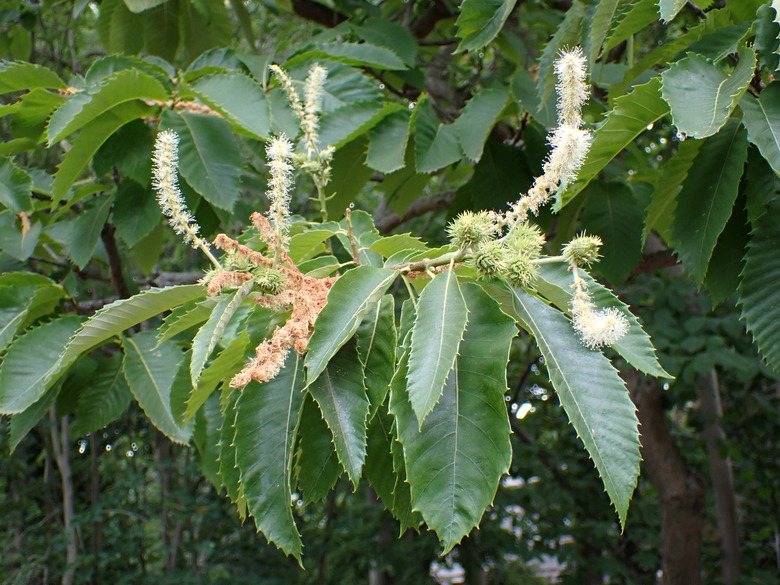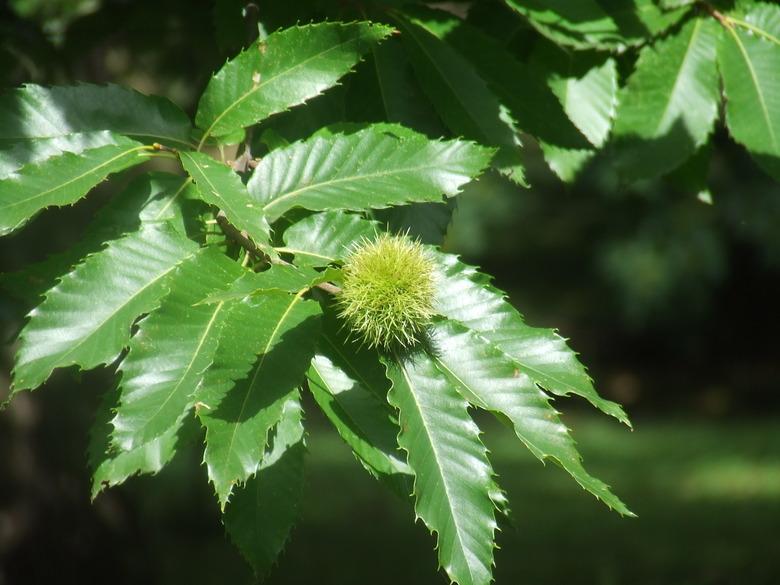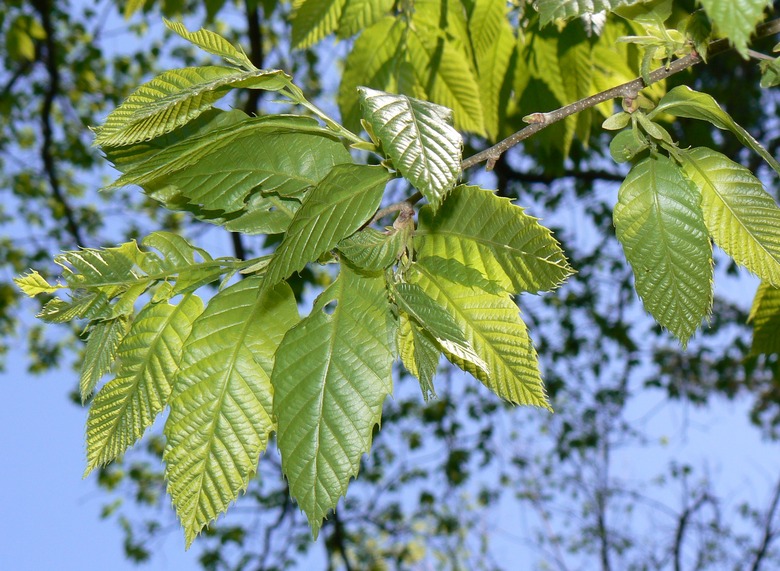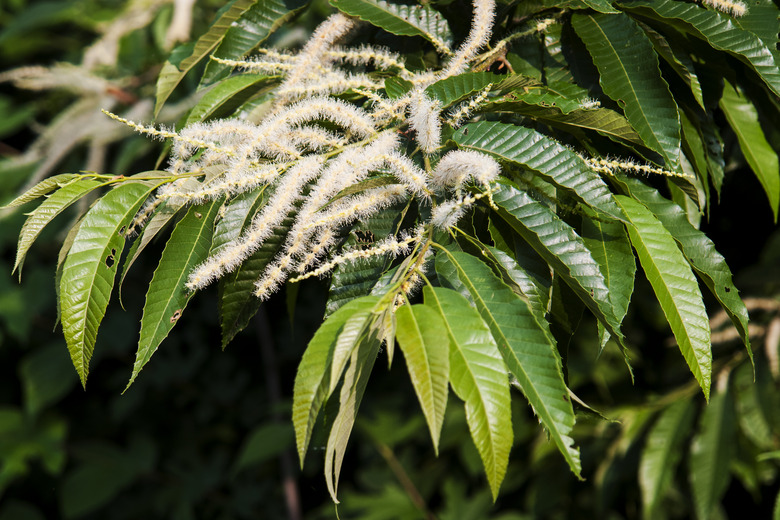How To Identify Chestnut Trees
A number of species of chestnut trees (Castanea spp.) grow throughout the U.S. Some are native, and others have been imported from Europe and Asia. You can tell different species apart by looking at the leaves, twigs, bark, buds, burs and nuts.
Species of Chestnut Trees
Species of chestnut trees native to the U.S. include the American chestnut (Castanea dentata, zones 5 to 8), which is virtually extinct in the wild due to a fungal disease known as chestnut blight. Also native to the U.S. is the Allegheny chinkapin (Castanea pumila, zones 5 to 9), which has heights between 15 and 30 feet, making it one of the smaller species.
Non-native chestnut trees grown in the U.S. include the European chestnut (Castanea sativa, zones 5 to 7), the Chinese chestnut (Castanea mollissima, zones 4 to 8) and the Japanese chestnut (Castanea crenata, zones 4 to 8). The two Asian species are more resistant to chestnut blight.
Chestnut Tree Leaves Identification
One way to identify chestnut trees is to look closely at the characteristics of the leaves. Fall color is not the best identifying trait, however, because the foliage of all of these trees turns shades of yellow in autumn.
Let's look at a few of the distinguishing features of chestnut tree leaves.
American Chestnut Tree
Measuring 6 to 10 inches in length, the leaves of the American chestnut tree are on the larger side. The leaves are canoe-shaped and thin. The upper surface of the leaves is dull.
As is the case with all chestnut trees, the margins of American chestnut leaves are toothed. In the case of this species, the teeth are deep and have sharp points. The base of the leaves is sharply tapered.
Allegheny Chinkapin
The Allegheny chinkapin has smaller leaves than the American chestnut, measuring 3 to 5 inches in length. This chestnut tree leaf is oval shaped and has a very hairy underside, described as pubescent.
European Chestnut Tree
The tree most easily confused with the American chestnut tree is the European chestnut, which has similar looking leaves that are also dull and 6 to 10 inches long. One way to tell them apart is by looking at the base of the leaves: The leaves of the European chestnut have a rounder base. The leaves of the European chestnut tree are a dark green color.
Chinese Chestnut Tree
Unlike the leaves of the American and European chestnuts, the leaves of the Chinese chestnut are glossy and thick and may have a leathery texture. Chinese chestnut leaves are usually pubescent on the underside.
Japanese Chestnut Tree
Like the leaves of the Chinese chestnut, the foliage of the Japanese chestnut is shiny and thick. The teeth on the leaves of this species are small compared to other chestnuts. The leaves have hairy undersides.
The leaves of the Japanese chestnut tree sometimes take on a bronzy color in the fall.
Other Chestnut Identification Features
In addition to the leaves, there are other distinguishing features, such as twig color and nut shape, that can help you identify chestnut trees.
Twig Characteristics
The twigs of the American chestnut are reddish brown or dark green in color, while those of the Chinese chestnut are tan or light green. The twigs of the Japanese chestnut may be red or purplish.
Some chestnut species, including the Chinese and Japanese chestnuts and Allegheny chinkapin, have hairy twigs. The twigs of the American and European chestnut trees are hairless.
Nut and Bur Identification
Chestnut trees produce their nuts inside a prickly case known as a bur. In most species, each bur contains two or three nuts. The burs of the Allegheny chinkapin have only a single nut inside, however.
The nuts of the American chestnut have a pointy tip, while the top of Chinese chestnuts is rounded. American chestnuts are smaller than Chinese chestnuts and have hairs on the surface.
Bud Characteristics
Examining the flower buds of chestnut trees can also help you identify the species. The buds of the American chestnut, for example, are pyramidal in shape, while those of the European chestnut are large and round. The buds of the Chinese chestnut may be oval or round.
Bark
The color and appearance of the bark can also help you differentiate between chestnut species. The Allegheny chinkapin has light brown bark with hints of red and is covered in scales. The bark of the European chestnut has a purplish-gray color and develops fissures as the tree gets older.
Mature American chestnut trees have brownish gray bark that develop flat, irregular ridges that wrap around the trunk in a spiral manner.
References
- Missouri Botanical Garden: Castanea sativa
- Missouri Botanical Garden: Castanea dentata
- Missouri Botanical Garden: Castanea mollissima
- The American Chestnut Foundation: Chestnut Species ID
- The American Chestnut Foundation: Chestnut Species Comparison: How to Tell the Different Species Apart
- North Carolina State Extension: Castanea pumila
- The American Chestnut Foundation: Burs and Nuts, American vs. Chinese
- Missouri Botanical Garden: Castanea crenata
